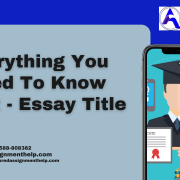Assignment title Aspects of Contract and Negligence for Business: Project
Scenario/Vocational Context
You have recently been employed as the in-house legal advisor for ‘Klarims’, a small business that specialises in handmade, 100% natural and ethically produced cosmetics. They deliver their products throughout the UK and their clientele ranges from individuals to large shops, spas and hotels.
Klarims operates from a unit in an industrial estate. It has recently seen success with a growing base of customers and is therefore launching various strategic initiatives to sustain and grow demand for the brand.
Task 1 (this task provides evidence for LO1 (AC 1.1, 1.2)
In the next month, Klarims are opening their first customer facing store in Central London as well as launching their new website. As a result, the company has expanded its sales and marketing teams. You have been asked to provide some in-house legal training to these new employees. In particular you have been asked to prepare:
(a) A presentation which explains the importance of the essential elements required for the formation of a valid contract (AC 1.1). Your presentation should explain how each element might relate to Klarims’ business. It should consist of 10 slides and accompanying slide notes (using roughly 100 words for the notes relating to each slide).
(b) A briefing paper in which you discuss the impact of different types of contract (AC 1.2). The briefing paper should be approximately 1,000 words and should explain the various ways a contract can be formed, including contracts made face to face, in writing and those made at a distance e.g. over the internet or by post. Your answer should make reference to relevant legislation as well as case law. The briefing paper should cover any pre-contractual information that Klarims must supply to the other party in cases of distance selling, as well as the customer’s cancellation rights.
Task 2 (this task provides evidence for LO1 (AC 1.3) and LO2 (AC 2.1, 2.2, 2.3)
Part 1:
You receive the following e-mail from Mr. Derek Wallace, the Managing Director of Klarims:
“Could you help on this one please? We published an advert on 20th January in the Evening Standard which stated:
‘Special offer on our luxurious, natural cosmetics. Place an order with us by the 31st January and we will send you a hamper full of skincare and hair care products worth £40 for free!’
We then realised we should have specified in the advertisement that there was a minimum order before people became eligible for the hamper. We therefore requested the newspaper to publish a second advert on the 25th
January stating:
‘Klarims regret to announce that the offer of the free gift hamper worth £40 with any order has now been withdrawn.’
We have, however, received the following orders:
1) An order form from a Mrs. Johnson, who ordered a bottle of shampoo worth £5. The order was received on 21
st January.We don’t know when this was posted, but the envelope had a second class stamp on it.
2) An order over email from a Mr. Harris for 2 bottles of body wash. He placed his order on 24th January but the e-mail wasn’t seen until 26th January.
3) An order form from a Miss Smith, which was posted on the 23rd January, but did not arrive until the 27th January. We’re not sure why it took so long, as it had a first class stamp on it, although our address was quite difficult to read on the envelope.
Do we have to send any of these customers a hamper or are we off the hook?”
Draft an e-mail response in which you apply the law on elements of a contract to advise whether Klarims is contractually obliged to provide a hamper of products worth £40 in each of the different situations listed above. (AC 2.1)
Part 2:
Jenny Howard, the customer relationships manager of Klarims, has asked your advice regarding letters of complaint received from one commercial buyer and one consumer buyer in relation to the purchase of two Klarims products: ‘Time Reverse’ anti-wrinkle cream and ‘Miracle Glow’ bath bombs.
These letters can be found at pages 4 and 5 of this document.
Jenny Howard has asked you to send her a letter of advice setting out the relevant law and applying it to the situations in letters 1 and 2. In your letter you will need to explain how the terms in a contract are classified, and analyse the terms in these contracts with reference to their meaning and effect (AC 1.3). You will also need to apply the law on terms in each of the contracts mentioned in letters 1 and 2. (AC 2.2). This will entail identifying the terms – both the express terms and any implied terms – and the effect of a breach. The advice letter should be approximately 800-1,000 words.
Part 3:
Klarims’ terms of business include the following:
‘Klarims accept no responsibility for personal injury or death. Once a product has been opened and used, Klarims will not provide a refund, even if it has not achieved the desired results.’
This is printed on the invoice that customers receive on delivery of goods if ordered online and on the back of the receipt of purchase if customers shop in store.
For their business clients such as hotels and spas, Klarims includes the following clause:
‘It is essential that payment for the order is to be made within seven days of presentation of the invoice. Payment made later than seven days after presentation of the invoice will be subject to a charge of £15 per day.’
This clause is included at the bottom of the order form that business customers must fill out to place their order.
You have been asked to prepare a report of approximately 1,000-1,200 words, evaluating the effect of these proposed terms in each of the contracts (AC 2.3) explaining how the terms would be classified and their effect. Your report should also incorporate suggestions as to how to make the proposed terms more effective and any possible changes to the way they should be drafted or made available.
Task 3 (this task provides evidence for LO3 (AC 3.1, 3.2, 3.3) and LO4 (AC 4.1)
Klarims wererecently contacted by a spa that wanted to use Klarims products as part of their treatments. They informed Klarims that some of their regular clients are allergic to Parabens (preservatives used in some cosmetics) and therefore requested that some Parabens-free face creams were supplied as part of the order. Two weeks later, Klarims got a phone call from the spa explaining that one of the clients that the supposedly Parabens-free cream was used on suffered a severe allergic reaction on her face. As a result, she was unable to attend a job interview for a job that she says she was very likely to get and the relevant company has now given the position to another candidate.
Derek Wallace, the Managing Director of Klarims, is extremely concerned about this and worried about the company’s liability. He is unclear about how Klarims can be liable if a particular individual in the sales team may have mistakenly sent the wrong product.
He wants to understand the company’s position and contacts you for advice. He would like you to write him a letter explaining the following:
a) The contrast between liability in contract and liability in tort (AC 3.1)
b) The nature of Klarims’ liability in negligence (AC 3.2)
c) How Klarims may be vicariously liable if a member of the sales team has made a mistake (AC 3.3)
Task 4 (this task provides evidence for LO4/ AC 4.1 and 4.2)
You have a meeting with the HR manager at Klarims about a problem that has occurred in relation to a driver, Peter, who has been engaged by Klarims to deliver goods between 9.00am and 5.00pm to their clients when needed. Peter only recently passed his driving test. One afternoon, whilst he was driving his Klarims van to a customer, he misjudged the length of a parking spot and scraped the back of the car parked behind him. The car was illegally parked. Peter finished his deliveries at 4.55pm but decided to run some personal errands on the other side of town afterwards before returning the van to the depot. While driving the van to the supermarket, he fell asleep at the wheel, lost control of the van and crashed into a pedestrian who suffered severe injuries. The pedestrian had been on his mobile phone at the time of crossing the road.
The HR manager asks you to research and submit a written piece of advice of approximately 800-1,200 words in which you:
(a) Apply the elements of the tort of negligence and defences in the situations outlined above to advise on the liability of Peter for the damage caused, ignoring issues connected with insurance (AC4.1)
(b) Apply the elements of vicarious liability in each of the situations above in order to advise on the liability of Klarims for any negligence claims that may arise. (AC 4.2)










